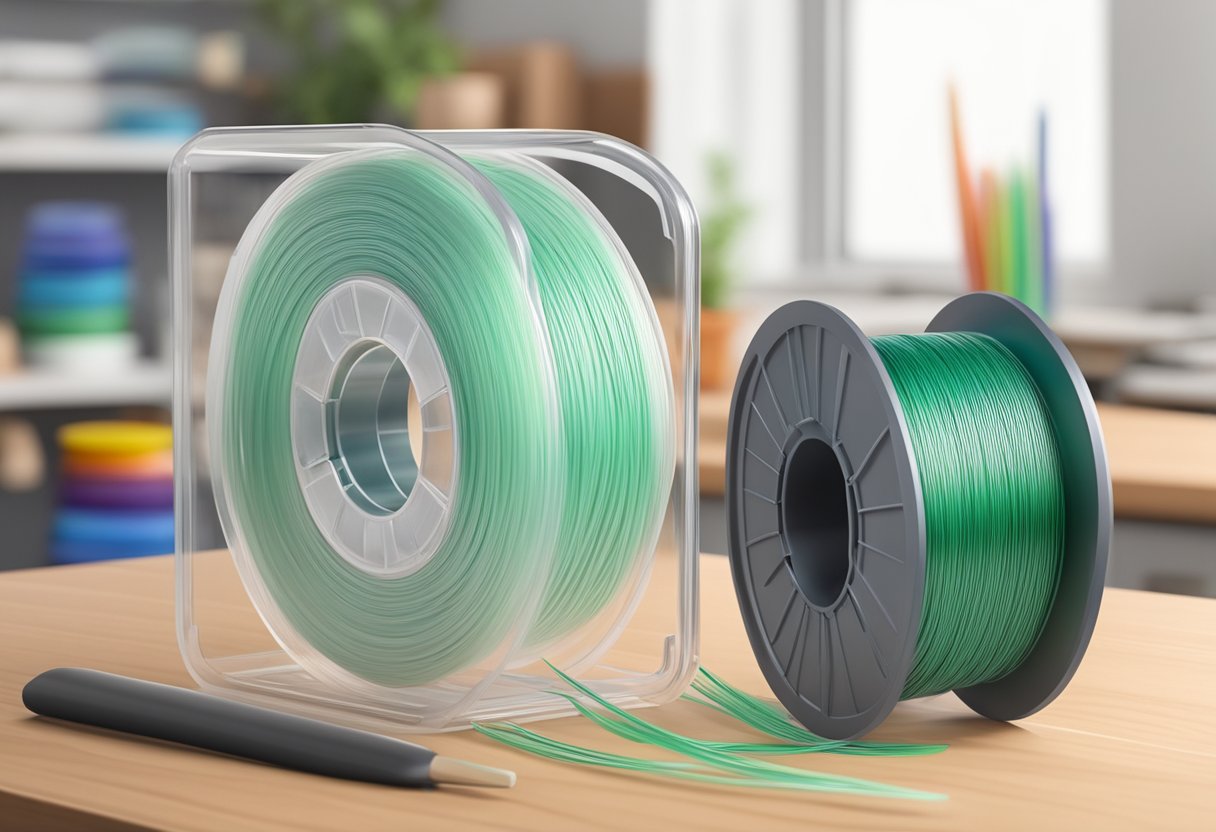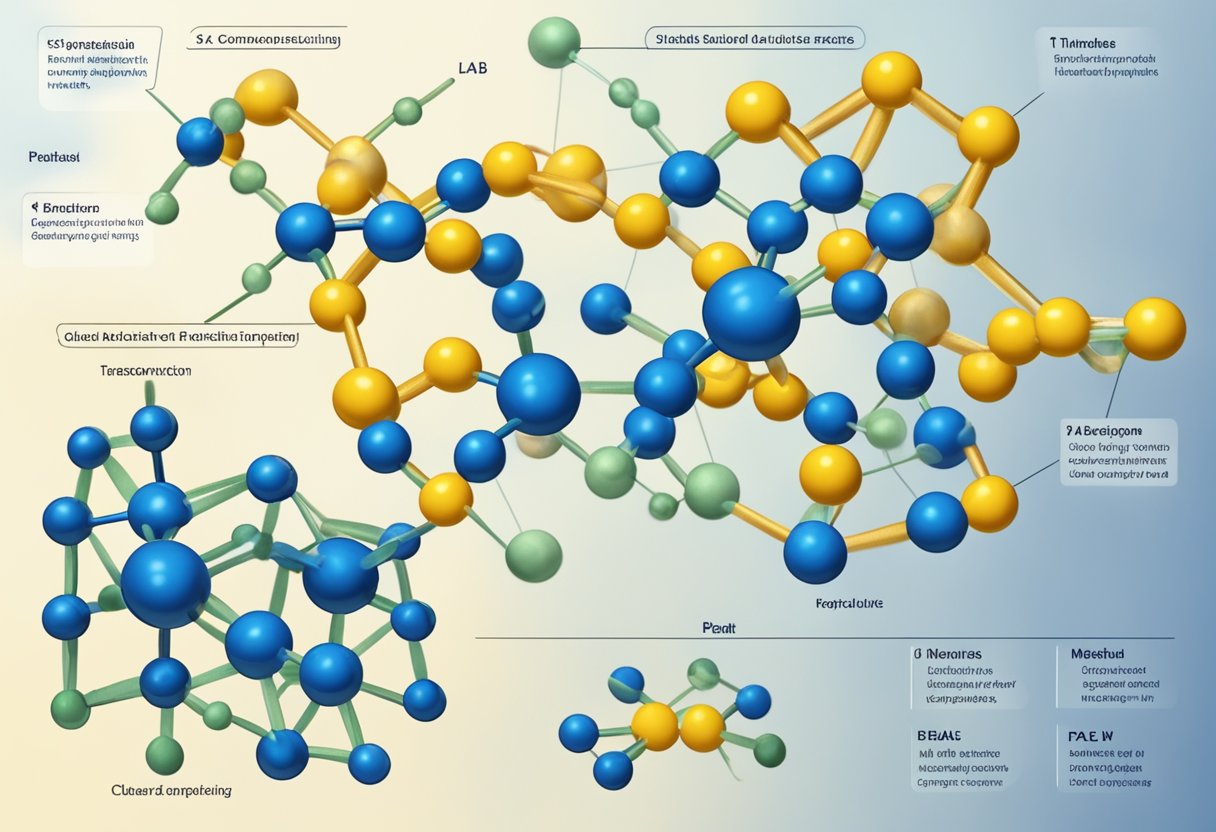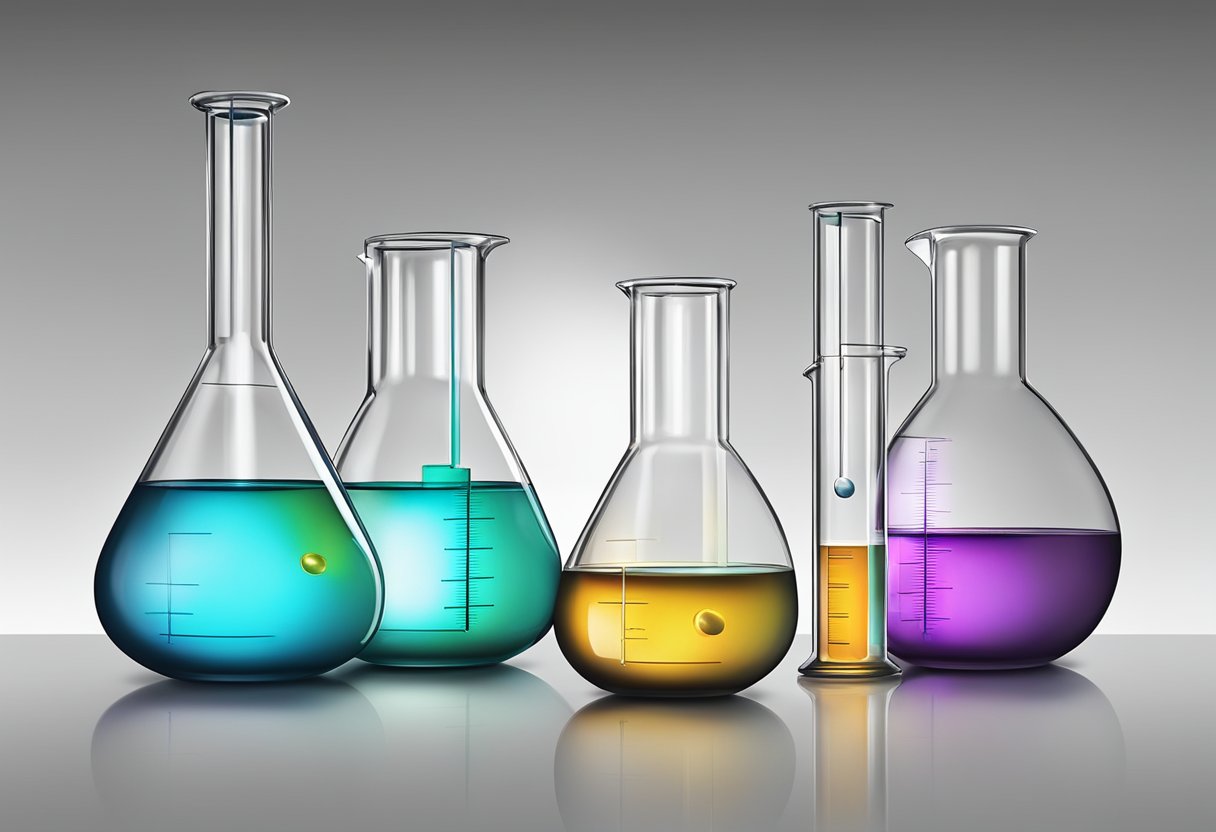PLA and PBAT: Understanding the Differences and Benefits
19/01/2024
PLA and PBAT are two types of biodegradable plastics that have gained popularity in recent years due to their eco-friendly properties. PLA, or polylactic acid, is a bioplastic made from renewable resources such as cornstarch or sugarcane. It is often used in packaging, disposable tableware, and 3D printing. PBAT, or polybutylene adipate terephthalate, is another bioplastic made from petroleum-based and renewable resources. It is commonly used in compostable bags, mulch films, and food packaging.

One of the main advantages of PLA and PBAT is their biodegradability. Unlike traditional plastics that can take hundreds of years to decompose, PLA and PBAT can break down into natural compounds within a few months to a few years, depending on the conditions. This makes them a more sustainable alternative to conventional plastics, which contribute to the growing problem of plastic pollution in the environment.
Despite their benefits, PLA and PBAT also have some limitations. For example, PLA is not suitable for high-temperature applications and can become brittle over time. PBAT, on the other hand, may not be as strong as traditional plastics and can be more expensive to produce. Nevertheless, the development of these biodegradable plastics represents a step towards a more sustainable future, where materials can be reused and recycled without harming the planet.
PLA and PBAT Overview

PLA (polylactic acid) and PBAT (polybutylene adipate terephthalate) are two types of biodegradable polymers that have gained popularity in recent years due to their eco-friendliness and biodegradability.
PLA is a thermoplastic polymer derived from renewable resources such as corn starch, sugarcane, and cassava. It is commonly used in 3D printing, food packaging, and disposable tableware. PLA is biodegradable and compostable, and it can break down into carbon dioxide and water under the right conditions.
PBAT, on the other hand, is a biodegradable copolymer made from adipic acid, terephthalic acid, and butanediol. It is commonly used in packaging, agricultural films, and disposable items. PBAT is also biodegradable and compostable, and it can break down into carbon dioxide, water, and biomass under the right conditions.
Both PLA and PBAT are considered eco-friendly alternatives to traditional plastics, as they are made from renewable resources and can biodegrade in the environment. However, it is important to note that they still require proper disposal methods and may not biodegrade in all environments.
Overall, PLA and PBAT are promising materials for reducing plastic waste and promoting sustainability in various industries.
Chemical Properties

PLA Characteristics
Polylactic Acid (PLA) is a biodegradable and compostable thermoplastic polymer derived from renewable resources such as corn starch, sugarcane, and cassava. PLA has a high melting temperature of 150-160°C and a glass transition temperature of 60-65°C. It is a brittle polymer with a low impact strength and is prone to cracking under stress. PLA is resistant to water, oils, and greases but is not resistant to organic solvents. It is transparent, odorless, and has a glossy surface finish. PLA is commonly used in 3D printing, food packaging, and biomedical applications.
PBAT Characteristics
Polybutylene adipate terephthalate (PBAT) is a biodegradable and compostable copolyester derived from fossil fuels. PBAT has a lower melting temperature of 100-120°C and a glass transition temperature of -20°C to -30°C. It is a flexible and tough polymer with a high impact strength and is resistant to stress cracking. PBAT is resistant to water, oils, greases, and organic solvents. It has a matte surface finish and is opaque. PBAT is commonly used in food packaging, compostable bags, and agricultural films.
In summary, PLA and PBAT are both biodegradable and compostable polymers with different chemical properties. PLA is a brittle polymer with a high melting temperature and is resistant to water, oils, and greases. PBAT is a flexible and tough polymer with a lower melting temperature and is resistant to stress cracking and organic solvents.
Biodegradability and Environmental Impact

PLA Biodegradation Process
Polylactic acid (PLA) is a biodegradable polymer that can be broken down by microorganisms in the environment. PLA biodegradation process involves the hydrolysis of ester linkages in the polymer chain, leading to the formation of lactic acid, which can then be metabolized by microorganisms. The rate of PLA biodegradation depends on various factors such as temperature, humidity, and microbial activity.
Studies have shown that PLA can biodegrade in different environments such as soil, water, and compost. In soil, PLA can take several months to a few years to degrade depending on the conditions. In water, the degradation rate is faster, and PLA can completely biodegrade within a few weeks to a few months. In compost, PLA can biodegrade faster due to the presence of microorganisms that can break down the polymer.
PBAT Biodegradation Process
Polybutylene adipate terephthalate (PBAT) is another biodegradable polymer that can be broken down by microorganisms in the environment. PBAT biodegradation process involves the hydrolysis of ester linkages in the polymer chain, leading to the formation of adipic acid, terephthalic acid, and butanediol, which can then be metabolized by microorganisms.
Studies have shown that PBAT can biodegrade in different environments such as soil, water, and compost. In soil, PBAT can take several months to a few years to degrade depending on the conditions. In water, the degradation rate is faster, and PBAT can completely biodegrade within a few weeks to a few months. In compost, PBAT can biodegrade faster due to the presence of microorganisms that can break down the polymer.
Comparative Analysis
PLA and PBAT are both biodegradable polymers that can be broken down by microorganisms in the environment. However, the rate of biodegradation and the environmental impact of these polymers can vary depending on various factors such as temperature, humidity, and microbial activity.
Studies have shown that PLA can biodegrade faster in water compared to PBAT, but PBAT can biodegrade faster in soil and compost compared to PLA. In terms of environmental impact, both PLA and PBAT have been shown to have a lower carbon footprint compared to conventional plastics such as polyethylene and polypropylene.
Overall, the biodegradability and environmental impact of PLA and PBAT make them attractive alternatives to conventional plastics. However, it is important to consider the specific application and environmental conditions when choosing between these biodegradable polymers.
Applications
Packaging Industry
PLA and PBAT have gained significant attention in the packaging industry due to their biodegradability and compostability properties. PLA is commonly used in the production of food packaging, disposable cutlery, and cups. PBAT is often used as a flexible film in packaging for products such as snacks, fresh produce, and pet food.
In addition to their eco-friendliness, PLA and PBAT offer comparable performance to traditional petroleum-based plastics in terms of durability, strength, and barrier properties. This makes them a viable alternative for companies looking to reduce their carbon footprint and meet sustainability goals.
Agricultural Sector
PLA and PBAT are also being used in the agricultural sector. PLA-based mulch films are used as an alternative to traditional plastic mulch films, which can have negative impacts on soil health and the environment. The use of PLA mulch films can reduce soil erosion, conserve water, and improve crop yields.
PBAT-based biodegradable bags are also used in the agricultural sector for packaging and transporting crops. These bags are designed to break down in soil or compost, reducing waste and pollution.
Medical Uses
PLA and PBAT are increasingly being used in medical applications. PLA is used to produce sutures, drug delivery systems, and tissue engineering scaffolds due to its biocompatibility and biodegradability properties. PBAT is used to produce medical gloves, surgical drapes, and other disposable medical supplies.
The use of biodegradable and compostable plastics in medical applications can reduce the environmental impact of medical waste and improve patient outcomes by reducing the risk of infection.
Overall, PLA and PBAT offer a range of applications across various industries, providing a sustainable alternative to traditional petroleum-based plastics.
Production Processes
PLA Synthesis
PLA is synthesized from lactic acid, which can be obtained through the fermentation of corn starch or sugarcane. The lactic acid is then polymerized through a process called ring-opening polymerization, where the lactide monomers are opened up and linked together to form long chains of polylactic acid.
The synthesis of PLA involves several steps, including purification of the lactic acid, lactide formation, and polymerization. The lactide monomers are heated and melted, then polymerized through a catalyst. The resulting polymer is then cooled and solidified into pellets or other forms for further processing.
PBAT Synthesis
PBAT is a copolymer of terephthalic acid (TPA), adipic acid (AA), and 1,4-butanediol (BDO). The synthesis of PBAT involves several steps, including esterification, polycondensation, and compounding.
In the esterification step, TPA and AA are reacted with BDO to form the corresponding diesters. The diesters are then subjected to polycondensation, which involves heating and dehydrating the diesters to form the PBAT polymer. The resulting polymer is then compounded with other additives, such as plasticizers and stabilizers, to improve its properties and processability.
Overall, both PLA and PBAT are synthesized through multi-step processes that involve careful control of reaction conditions and purification steps. These processes are crucial to ensure the production of high-quality, consistent materials that can meet the demands of various applications.
Market Trends and Future Outlook
The PLA and PBAT market has witnessed significant growth in recent years, and this trend is expected to continue in the future. The increasing demand for sustainable and biodegradable products has been a major driver of the market growth. PLA and PBAT are widely used in packaging, agriculture, automotive, and consumer goods industries.
The global market for PLA and PBAT is expected to reach USD 7.7 billion by 2027, growing at a CAGR of 16.5% from 2020 to 2027. The Asia Pacific region is expected to dominate the market due to the increasing demand for sustainable products and the presence of major manufacturers in the region.
In terms of application, packaging is expected to be the largest segment of the PLA and PBAT market. The growing demand for sustainable packaging solutions has led to the increased adoption of PLA and PBAT-based packaging materials. The automotive industry is also expected to witness significant growth due to the increasing demand for lightweight and eco-friendly materials.
Moreover, the increasing government regulations and initiatives to reduce plastic waste and promote sustainable products are expected to drive the market growth. For instance, the European Union has set a target to recycle 55% of plastic packaging waste by 2030 and ban single-use plastics.
In conclusion, the PLA and PBAT market is expected to witness significant growth in the coming years due to the increasing demand for sustainable and biodegradable products. The market is expected to be dominated by the Asia Pacific region, and the packaging and automotive industries are expected to be the major application segments.
Regulatory Framework
International Standards
The use of PLA and PBAT in various industries is governed by several international standards. The most prominent of these is the ASTM International, which has set standards for biodegradable plastics. The ASTM D6400 standard, for instance, specifies the criteria for compostable plastics, including PLA and PBAT. The standard requires that the plastic must break down into carbon dioxide, water, and biomass within a specified time frame, leaving no toxic residue.
Another international standard that governs the use of biodegradable plastics is the European Standard EN 13432. This standard requires that the plastic must break down into carbon dioxide, water, and biomass within a specified time frame, leaving no toxic residue. The standard also sets requirements for the labeling and identification of biodegradable plastics.
Regional Regulations
In addition to international standards, there are also several regional regulations that govern the use of PLA and PBAT. In the United States, for instance, the Federal Trade Commission (FTC) has set guidelines for the labeling of biodegradable plastics. The guidelines require that the plastic must break down into carbon dioxide, water, and biomass within a specified time frame, leaving no toxic residue.
In Europe, the European Union has set regulations for the use of biodegradable plastics. The EU Directive 94/62/EC requires that biodegradable plastics must meet certain criteria in order to be labeled as such. The criteria include the ability to biodegrade in a specified time frame, the absence of toxic residue, and the ability to be composted.
Overall, the regulatory framework for the use of PLA and PBAT is complex and varies from region to region. It is important for manufacturers and users of these materials to be aware of the relevant standards and regulations in order to ensure compliance and avoid potential legal issues.
Challenges and Limitations
Material Properties
PLA and PBAT have unique material properties that make them attractive alternatives to traditional petroleum-based plastics. However, these properties also present challenges and limitations in certain applications. For example, PLA has a relatively low melting point and can deform or melt when exposed to high temperatures, which limits its use in applications that require heat resistance. PBAT, on the other hand, can become brittle over time, which may limit its use in applications that require long-term durability.
Cost Factors
The cost of PLA and PBAT is generally higher than traditional petroleum-based plastics. This is due to the higher cost of raw materials and the manufacturing process. While the cost of PLA and PBAT has decreased over time, it is still a significant factor that limits their widespread adoption. Additionally, the cost of recycling and composting PLA and PBAT can be higher than traditional plastics, which may limit their sustainability benefits.
Recycling and Composting
PLA and PBAT are often marketed as more sustainable alternatives to traditional plastics because they are biodegradable and compostable. However, the reality of recycling and composting these materials is more complex. PLA and PBAT cannot be recycled with traditional plastics, which limits their recyclability. Additionally, composting PLA and PBAT requires specific conditions and facilities, which may not be available in all areas. This can limit the environmental benefits of these materials if they end up in landfills or are improperly disposed of.
Overall, while PLA and PBAT offer unique benefits as alternatives to traditional petroleum-based plastics, they also face challenges and limitations in certain applications. These challenges and limitations should be carefully considered when evaluating the suitability of these materials for specific applications.
Advancements and Innovations
PLA and PBAT are two biodegradable polymers that are gaining popularity due to their eco-friendliness. In recent years, there have been several advancements and innovations in the production and use of these materials.
One of the most significant advancements is the development of PLA and PBAT blends. These blends combine the strengths of both materials, resulting in a more robust and versatile polymer. The addition of PBAT to PLA improves its flexibility and toughness, making it suitable for a wider range of applications.
Another innovation is the use of additives to enhance the properties of PLA and PBAT. For example, the addition of nanoparticles can improve the mechanical strength and thermal stability of these materials. Similarly, the incorporation of natural fibers, such as hemp or flax, can enhance their biodegradability and reduce their carbon footprint.
In addition to these improvements, there have been several innovations in the production of PLA and PBAT. New manufacturing techniques, such as reactive extrusion and melt blending, have made it easier to produce these materials on a large scale. This has led to a reduction in production costs, making PLA and PBAT more cost-effective than ever before.
Overall, these advancements and innovations have made PLA and PBAT more attractive alternatives to traditional plastics. With their improved properties and lower production costs, these materials are poised to become even more popular in the years to come.




